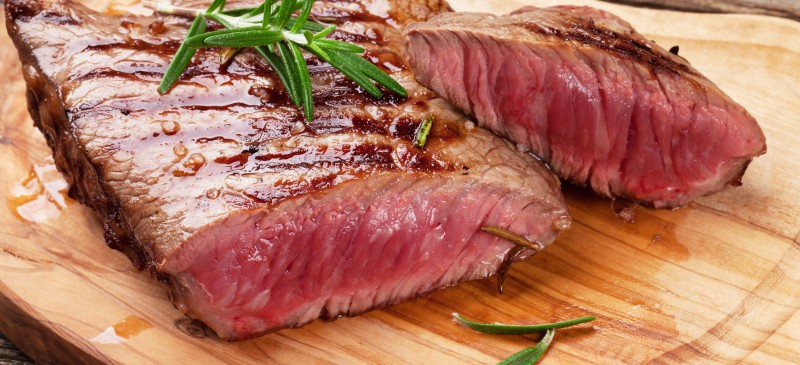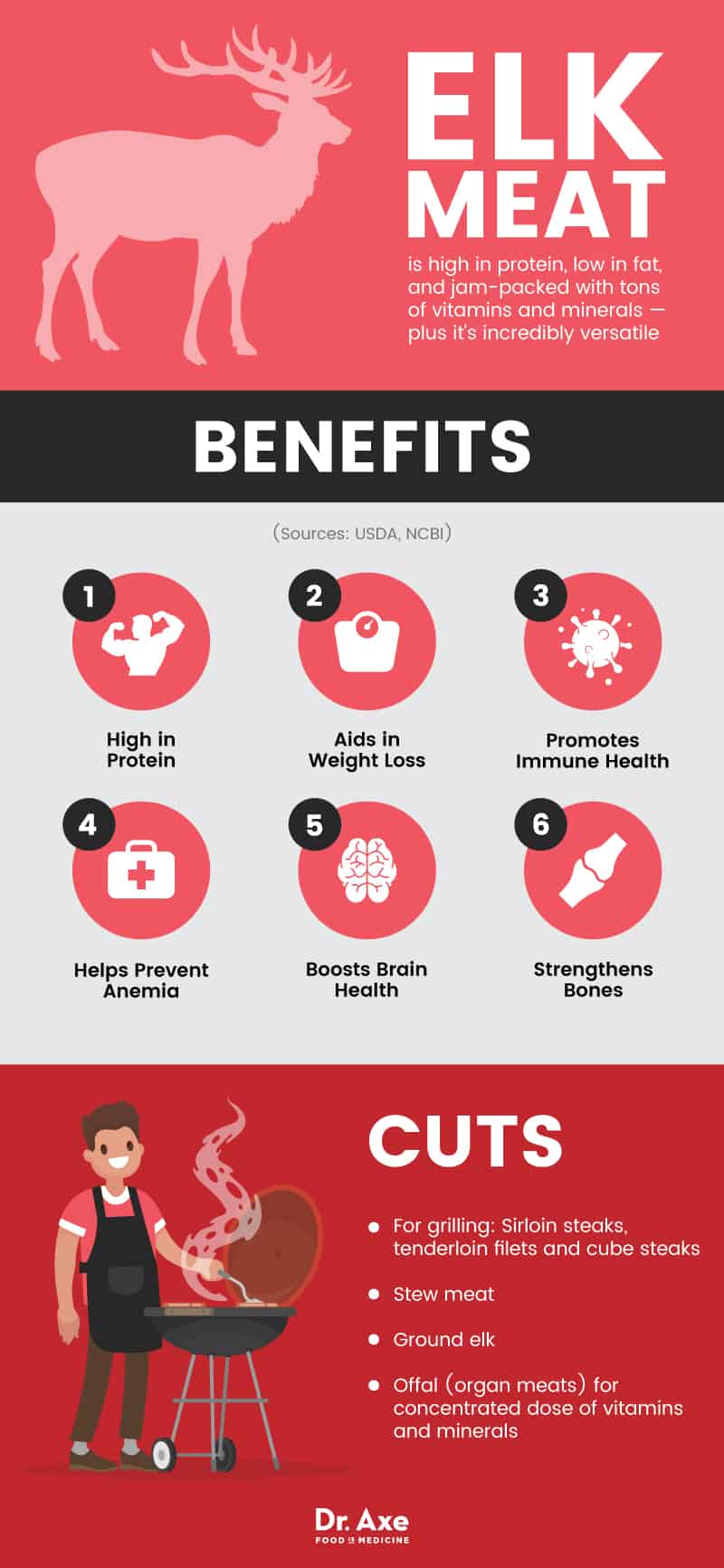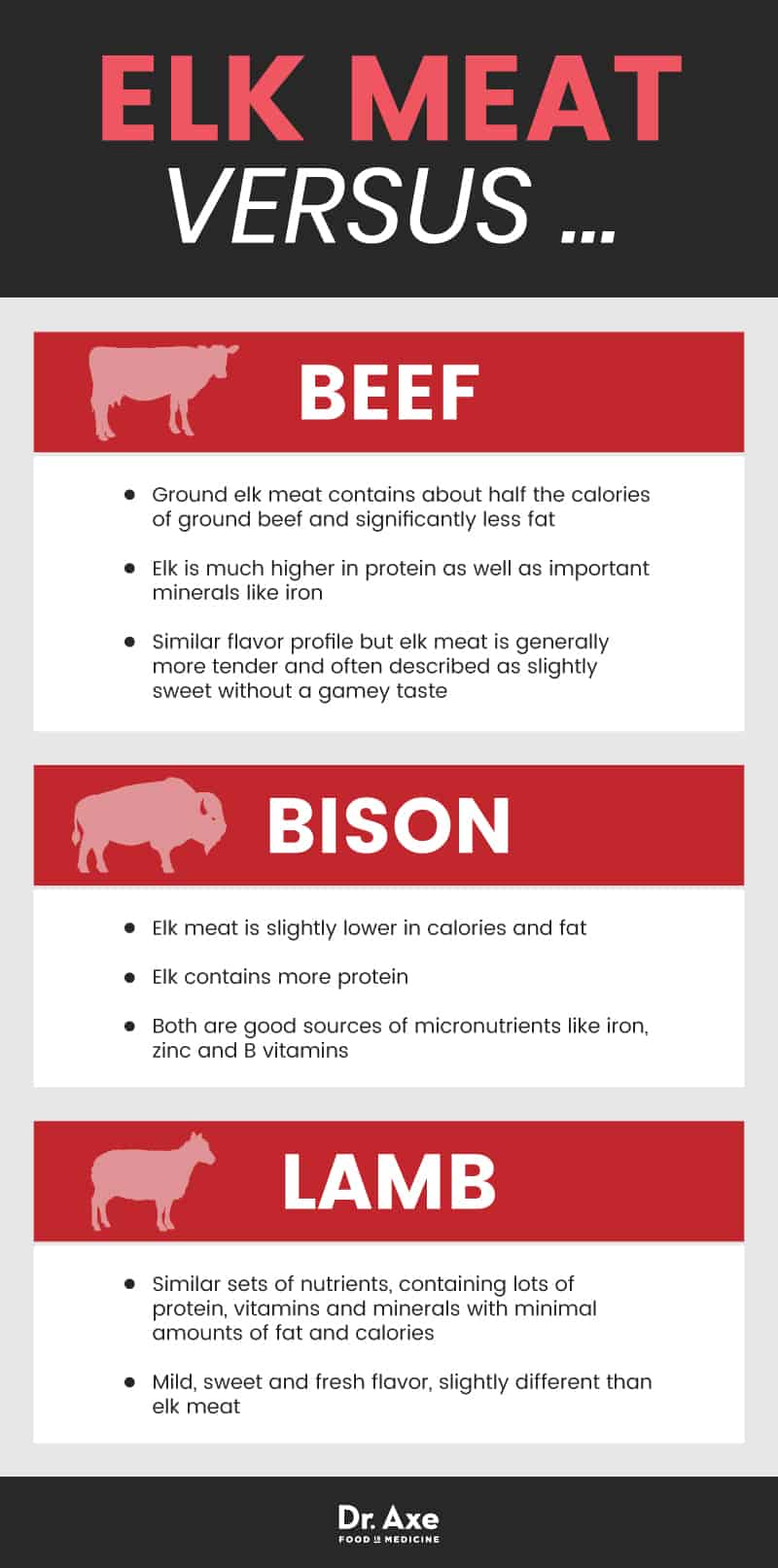This Dr. Axe content is medically reviewed or fact checked to ensure factually accurate information.
With strict editorial sourcing guidelines, we only link to academic research institutions, reputable media sites and, when research is available, medically peer-reviewed studies. Note that the numbers in parentheses (1, 2, etc.) are clickable links to these studies.
The information in our articles is NOT intended to replace a one-on-one relationship with a qualified health care professional and is not intended as medical advice.
This article is based on scientific evidence, written by experts and fact checked by our trained editorial staff. Note that the numbers in parentheses (1, 2, etc.) are clickable links to medically peer-reviewed studies.
Our team includes licensed nutritionists and dietitians, certified health education specialists, as well as certified strength and conditioning specialists, personal trainers and corrective exercise specialists. Our team aims to be not only thorough with its research, but also objective and unbiased.
The information in our articles is NOT intended to replace a one-on-one relationship with a qualified health care professional and is not intended as medical advice.
Is Elk Meat Healthy? Top 6 Benefits of Elk Meat Nutrition
February 25, 2018

Elk meat may not make a regular appearance in your family’s weekly dinner rotation, but maybe it should. High in protein, low in fat, and jam-packed with tons of vitamins and minerals, elk meat is truly a powerhouse of nutrition.
Not only is it healthy, but it’s also incredibly versatile. You can swap it in place of beef in just about any recipe to add a kick of flavor and a hint of sweetness, plus cut down on the fat and calories of your meal as well.
So what is elk meat good for, how can you use it and where can you buy elk meat? Here’s everything you need to know about this nutritious game meat.
Is Elk Meat Healthy? Elk Meat Nutrition Facts
Elk meat is a nutrient-dense food, meaning that it’s low in calories but contains a concentrated amount of many vitamins and minerals. It’s low in carbohydrates and fat but high in protein, zinc, vitamin B12, niacin and vitamin B6.
A three-ounce portion of cooked, pan-broiled elk meat contains approximately: (1)
- 164 calories
- 0 grams carbohydrates
- 22.6 grams protein
- 7.4 grams fat
- 5.6 milligrams zinc (37 percent DV)
- 2.2 micrograms vitamin B12 (36 percent DV)
- 4.5 milligrams niacin (23 percent DV)
- 188 milligrams phosphorus (19 percent DV)
- 0.4 milligram vitamin B6 (18 percent DV)
- 0.3 milligram riboflavin (16 percent DV)
- 2.8 milligrams iron (16 percent DV)
- 7.8 micrograms selenium (11 percent DV)
- 301 milligrams potassium (9 percent DV)
- 0.9 milligram panthothenic acid (9 percent DV)
- 0.1 milligram thiamine (7 percent DV)
- 0.1 milligram copper (6 percent DV)
- 20.4 milligrams magnesium (5 percent DV)
Elk meat also contains small amounts of vitamin E, folate and calcium.
Elk Meat Benefits
- High in Protein
- Aids in Weight Loss
- Promotes Immune Health
- Helps Prevent Anemia
- Boosts Brain Health
- Strengthens Bones
1. High in Protein
Protein is a crucial component of many aspects of health. Your body needs protein to build and repair tissues, produce enzymes and hormones, and form the foundation of your muscles, skin and bones. A protein deficiency can result in stunted growth, an increased appetite and a greater risk of infection.
Elk is an excellent source of protein. In fact, with about 23 grams of protein in each three-ounce serving, the ground elk nutrition facts are comparable to other healthy protein foods like chicken and turkey. Including even just one serving in your day as part of a healthy diet can help you easily meet your protein needs.
2. Aids in Weight Loss
With nearly 23 grams of protein and only 164 calories in a three-ounce serving of ground elk meat, this nutritious red meat makes a great addition to any weight loss diet. Its protein content, in particular, may be able to help ward off cravings and reduce hunger.
According to a study published in the American Journal of Clinical Nutrition, increasing dietary protein intake by 15 percent may result in increased satiety and decreased caloric intake. (2) Another study out of the Netherlands showed that eating a high-protein breakfast reduced levels of ghrelin, the hormone responsible for stimulating hunger, to a greater extent than a high-carb breakfast. (3)
3. Promotes Immune Health
Elk meat is a great source of zinc, an important mineral that plays a central role in the health of your immune system. Zinc acts as an antioxidant to neutralize disease-causing free radicals, aids in the development of immune cells and is involved in the production of cytokines. (4)
One study conducted by researchers at Wayne State University School of Medicine in Detroit and the University of Michigan showed that supplementing older adults with zinc led to a reduction in the incidence of infection and decreased levels of oxidative stress and inflammation. (5) Similarly, a 2012 review compiled the results of 17 studies and showed that zinc supplementation may be effective in reducing the duration of the common cold. (6)
Related: What Is the Nordic Diet? Benefits, Meal Plan & What You Can Eat

4. Helps Prevent Anemia
Anemia is a condition characterized by a lack of healthy red blood cells in the body. It can cause symptoms like fatigue, shortness of breath, paleness, dizziness and a fast heartbeat.
Although there are many types of anemia, some of the most common are caused by deficiencies in important micronutrients. Fortunately, elk meat is rich in several of the vitamins and minerals involved in red blood cell production. It’s especially high in vitamin B12 and iron, two nutrients that are necessary to prevent iron-deficiency anemia and pernicious anemia. (7)
5. Boosts Brain Health
A growing body of research has established that there is a clear link between what you put on your plate and your focus, memory, cognitive function and mental health.
Many of the nutrients found in elk meat have been shown to influence brain health. Vitamin B12, for instance, has been shown to play a role in memory and learning. (8) According to a study out of the Rush Institute for Healthy Aging, Centers for Disease Control and Prevention in Atlanta, niacin may also be protective against Alzheimer’s disease and age-related cognitive decline. (9) Meanwhile, other studies suggest that low levels of vitamin B6 could be associated with depression, and supplementation may aid in improving mental health. (10, 11)
6. Strengthens Bones
As you get older, bones can start to thin and become weak and brittle. Conditions like osteoporosis can significantly increase the risk of fractures and even create changes in posture due to bone loss. (12)
Elk meat is high in L-methionine, an essential amino acid that helps keep bones strong. One animal study published in the Journal of Nutrition showed that L-methionine paired with endurance exercise decreased bone mass but helped enhance intrinsic bone strength. (13)
Elk meat is also high in phosphorus, another nutrient that is an integral part of bone health. In fact, about 85 percent of phosphorus is found in the bones and teeth. (14) A study in 2015 even found that phosphorus intake was associated with increased bone mineral content and bone mass density, plus a lower risk of fractures. (15)
Is Elk Meat Healthier than Beef? Elk Meat vs. Beef
Elk meat is often swapped in for beef in recipes, but how does elk meat and grass-fed beef compare nutritionally and which one is healthier?
Gram for gram, ground elk meat contains about half the calories of ground beef and significantly less fat. It’s also much higher in protein as well as important minerals like iron, making it an excellent choice to use in place of beef if you’re looking to switch it up from time to time.
How does the elk vs. beef taste compare? While these two meats do have a similar flavor profile, elk meat is generally more tender with a distinct flavor that differentiates it from beef. It’s often described as slightly sweet and without the gamey taste that you might be expecting.
Elk Meat vs. Bison Meat vs. Lamb Meat
Bison meat is another type of game meat that’s a popular alternative to beef in recipes like chili, burgers and meatloaf. Much like elk, it’s also well-known for its extensive nutrient profile and potential health benefits.
However, there are some differences between elk vs. bison meat in terms of nutrition. In particular, elk meat is slightly lower in calories and fat and also contains a higher amount of protein. Still, both are good sources of micronutrients like iron, zinc and B vitamins.
Elk meat is also often compared to lamb meat, a type of red meat produced from sheep that are less than one year old. Lamb meat provides a similar set of nutrients as elk meat, containing lots of protein, vitamins and minerals with minimal amounts of fat and calories.
Lamb meat has a mild, sweet and fresh flavor that can also be used in a wide array of dishes. It’s a popular choice for stuffed cabbage rolls, kebabs and roasts, but can also be used in place of beef in most recipes.

Where to Find and How to Select the Best Elk Meat
Wondering where to buy elk meat? While you may not find it sitting on the shelf at your local grocery store, there are plenty of suppliers that do have it on hand or can special order it for you.
Many farms and specialty butcher shops carry hard-to-find types of meat like rabbit, duck, deer and elk. Online retailers have also started selling elk and other game meats, which are frozen and shipped conveniently straight to your door.
But is elk meat expensive? The prices depend on both the supplier and the cut of meat that you select, but elk meat generally does cost more than other types of meat like beef or pork. If purchasing online, for example, one pound of ground elk costs around $10–$15 while elk tenderloin runs around $20–$50 per pound. If you have a big enough freezer and are able to find bulk elk meat for sale, you’re more likely to get a better deal on the elk meat price per pound.
There are many cuts of elk meat available depending on your preference. Sirloin steaks, tenderloin filets and cube steaks are great for grilling while stew meat and ground elk are more versatile and ideal if you’re just giving elk a try for the first time. You can also go for offal, or organ meats, to get in a concentrated dose of vitamins and minerals, though it can be even more challenging to find and may require you to look beyond your local butcher.
As always, buy from a trusted and reliable source, and buy locally if possible. Additionally, opt for organic, grass-fed elk free of antibiotics, hormones and steroids to ensure you’re getting the best quality.
Elk Meat Uses and Elk Meat Recipes
Since most of your elk meat will likely be stored in the freezer, you’ll need to thaw it out before you can use it. Ideally, you should thaw it slowly to minimize the loss of moisture from the meat. Place it in a pan or container to catch any drippings, and then put it in the refrigerator for one to two days and allow it to thaw. If you’re in a rush, you can also seal it in a plastic bag and run cold water over it to thaw it out quicker.
Elk meat can be used in place of other red meats in your favorite recipes. It’s very tender and flavorful, and the elk meat taste is often compared to beef. Keep in mind that elk is lean, so it can easily get dried out and overcooked if you’re not careful. Cooking it low and slow or hot and fast are your best bets when it comes to retaining maximum moisture.
Use ground elk in chili or stew, try shredding and slow-cooking it to add to sandwiches, or fire up the grill and serve a savory elk steak.
Need some more inspiration? Here are a few other elk meat and ground elk meat recipes that you can start experimenting with:
- Elk Meatloaf
- Spicy Asian Venison Bowl
- Slow Cooker Hearty Elk & Vegetable Stew
- Elk Meatballs with Sweet & Spicy Sauce
- Mushroom Stuffed Venison Tenderloin
History
The elk, also known as wapiti, is one of the largest members of the deer family as well as one of the biggest land mammals native to North America and Eastern Asia. Over the years, elk have been introduced to several other countries around the globe and can now even be found in places like New Zealand and Argentina.
For the majority of the year, elk stay with members of the same sex until mating season. During this period, the males compete for the attention of the female and even engage in practices like antler wrestling. Elk tend to live between 10–15 years in the wild and even longer in captivity.
Unfortunately, elk are especially susceptible to disease and parasitic infections that can often be fatal. Conditions like chronic wasting disease, brucellosis and elk hoof disease have all been recorded in elk populations.
In addition to meat production, elk are also known for their antler velvet. This is a type of immature tissue that surrounds the bone and cartilage on the antlers of deer or elk. The velvet is extracted and made into supplements like deer antler spray as well as pills and powders. It contains amino acids, growth factors and collagen and is typically used to promote muscle strength, joint health and endurance, though research on its benefits has turned up mixed results.
Precautions
Elk meat nutrition boasts a long list of important nutrients and potential health benefits, but there are some precautions that you should take when adding it into your diet.
Wild game meat can carry parasites that could be passed on to humans and cause infection. Be sure to properly store your meat in the refrigerator or freezer and cook to an internal temperature of at least 160 degrees Fahrenheit to reduce the risk of infection. If you experience any negative side effects after eating elk meat, talk to your doctor.
Avoid processed varieties of elk meat that have been cured, smoked or salted. Not only has processed meat been identified as carcinogenic, but some studies show that it may also contribute to heart disease and other types of chronic disease. (16, 17)
Finally, elk meat may have some benefits over beef, but it’s still considered red meat. Excess red meat consumption has been associated with an increased risk of several chronic conditions, including colorectal cancer, coronary heart disease and diabetes, so keep intake moderate. (18)
Final Thoughts
- Elk meat is a type of game meat that can be easily substituted for beef in many recipes, from stews to sandwiches and more.
- Elk meat nutrition is low in calories and fat but high in protein and several micronutrients, including zinc, vitamin B12, niacin, vitamin B6 and phosphorus.
- Potential benefits of adding elk meat to your diet include increased weight loss, improved immune function, a reduced risk of anemia, and better brain and bone health.
- Be sure to buy from a trusted source and add elk meat in moderation to a healthy, well-rounded diet to truly take advantage of this nutritious type of meat.












